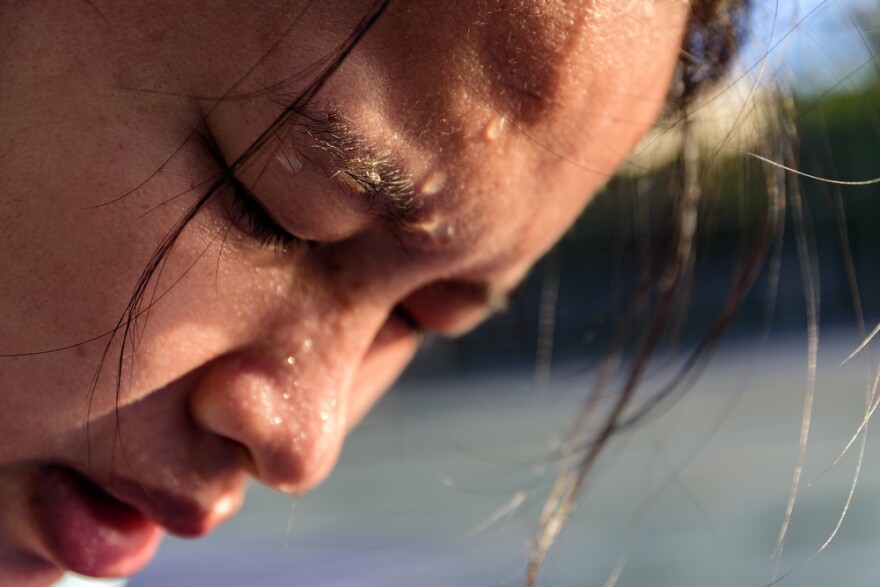Heat exhaustion
Heat exhaustion occurs when the body is unable to cool itself down after a quick rise in temperature, often characterized by dehydration. Look for the signs of heat exhaustion:
- Heavy sweating
- Pale, clammy
- Dizziness
- Headache
- Nausea, vomiting, fainting
With heat exhaustion, it’s important to rehydrate and cool the body down. Move the person to a cool environment and apply cool compresses to the skin. They should get plenty of water and maybe even a cool bath.
But Dr. Patricia Rodriguez, the Chief Medical Officer of North Texas Area Community Health Centers, says that an ice bath is not a good idea. She explained that this kind of sudden temperature change can confuse the body. The goal is to cool the body down slowly.
Heat stroke
If left untreated, exhaustion can escalate into heat stroke which is more extreme and can be fatal. During a heat stroke, your body temperature rises above 103 degrees Fahrenheit. Heat stroke calls for emergency medical treatment.
People with heat stroke may display the following symptoms:
- No sweating
- Red, hot, dry skin
- Confusion/disorientation
- Unconsciousness
- Nausea, vomiting, fainting
If you notice someone with heat stroke, move them to a cool area and call 9-1-1. As with heat exhaustion, you should apply a cool compress like a wet cloth and do anything else to lower their temperature. However, Rodriguez warns against giving victims water, especially if they are feeling disoriented or have fainted. She said that it is much more effective to cool them down externally while waiting for emergency care. Sunburn
Many people have experienced minor sunburns. But a sunburn can be more than a minor irritation. With enough exposure, the skin will blister and peel. It can contribute to dehydration. Sufferers may experience nausea, and even a fever. And in the long-term, too much time in the sun can lead to skin cancers such as malignant melanoma and basal cell carcinoma.
Preventing a sunburn can be pretty simple. Limit your time in the sun. If you do spend time soaking in some rays, apply a broad spectrum, high sun protection factor (SPF) sunscreen. Wear a hat. Even if you’re at the beach, bring along a long-sleeved shirt and pants to block the sun.
Preventing heat-related illnesses
Dr. Rodriguez recommends that you not avoid going outside between 10 a.m. and 5 p.m. when the sun is at its highest intensity. If you must go outside, though, here are some ways you can minimize risk to heat exhaustion or heat stroke.
- Stay hydrated
- Wear a hat and loose light-weight/light-colored clothing
- Apply sunscreen
- Take breaks in shaded areas often
If you don't have access to a home with central air conditioning, Dr. Rodriguez suggests that you visit a local cooling center.
Gloria Farris covers Fort Worth and Tarrant County. Got a tip? Email Gloria at gfarris@kera.org.
KERA News is made possible through the generosity of our members. If you find this reporting valuable, consider making a tax-deductible gift today. Thank you









